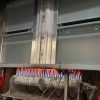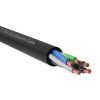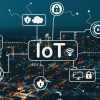Contents
Introduction
An electrical grid, electric grid or power grid, is an interconnected network use to deliver electricity from producer to consumer. The electric grid has four basic components:
- Power Generation
- Transmission lines
- Distribution networks
- Consumer use
The electrical grid as we know it began with isolated power generation systems across the world starting in the 1870s. The growth and unification of the systems into an interconnected AC power ‘grid’ helped raise the quality of life of people from all classes.
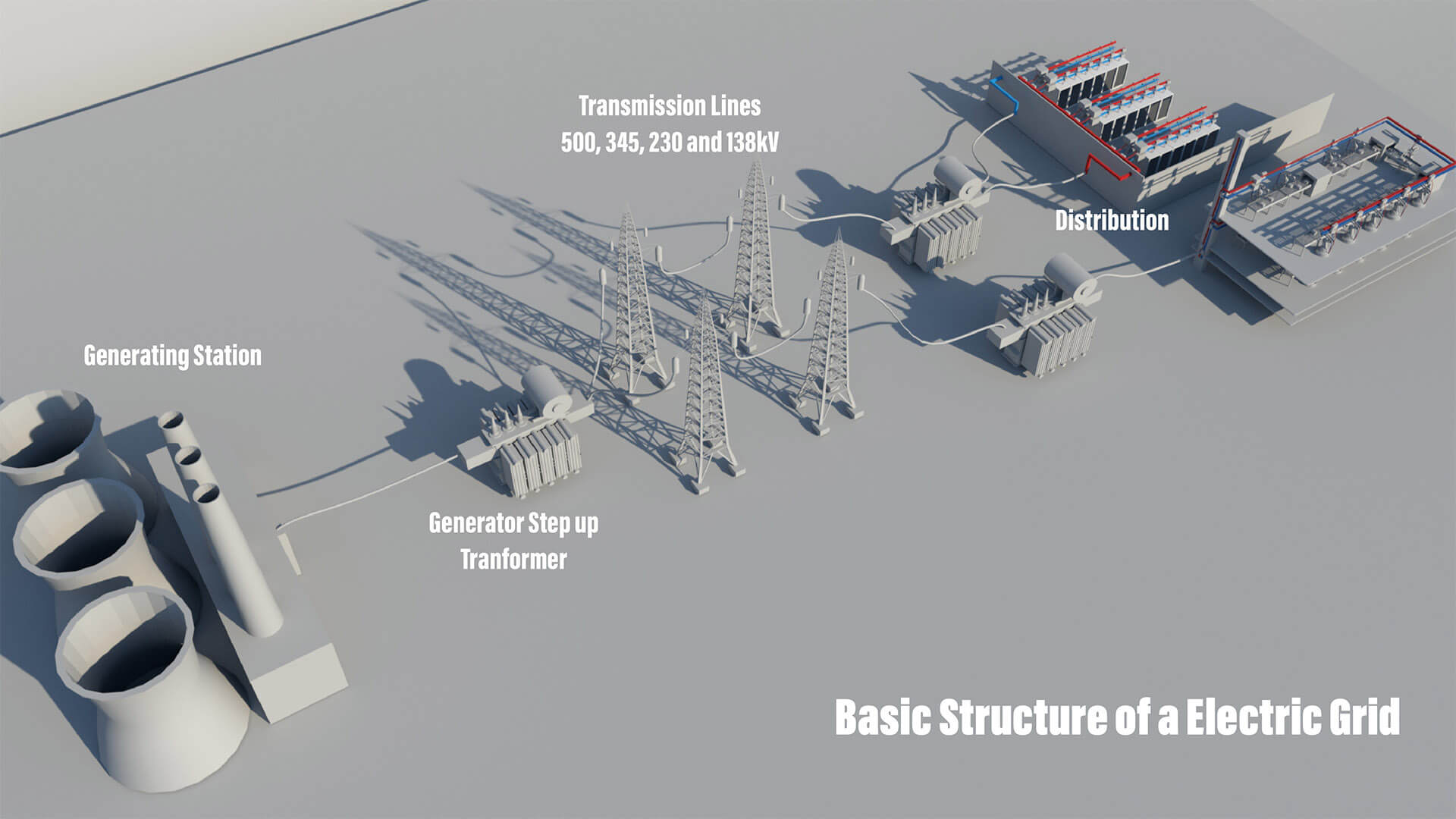
Working of Electrical Grid
The network comprises the transmission lines and distribution lines collectively take as an electric grid. It works as a bridge between the place where power is generated and the place where it is being consumed. The generated power is transfer in the bulk through the transmission lines to the distribution lines by increasing the voltage to decrease the resistance in the lines. Then this transferred power is distributed through the distribution lines to the consumers by lowering its voltage to a desirable level so that it can be used by the consumers. There are different electric substations involved in this whole process which are used to increase or decrease the voltage.
What are the four components of electrical grid?
Power Generation
Power generation is the process of generating power from different sources such as Coal, water, nuclear, etc in the power plant. This generated power is then transferred to the places where it can be used (Consumer).
How do we generate eletrical power
Most of world electricity generation is from electric power plants that use a turbine to drive electricity generators. In a turbine generator, a moving fluid—water, steam, combustion gases, or air—pushes a series of blades mounted on a rotor shaft. The force of the fluid on the blades spins/rotates the rotor shaft of a generator. The generator, in turn, converts the mechanical (kinetic) energy of the rotor to electrical energy. Different types of turbines include steam turbines, combustion (gas) turbines, hydroelectric turbines, and wind turbines.
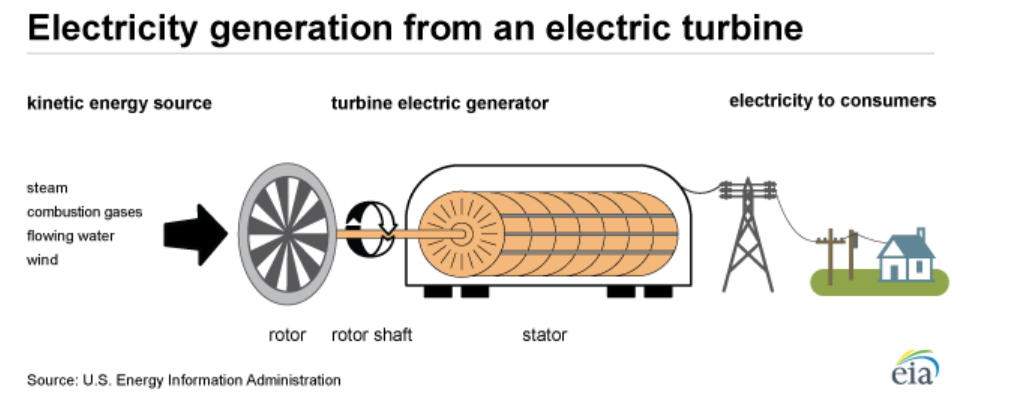
Different sources of power generation
Nuclear power
Using a nuclear fission reaction and uranium as fuel, nuclear power plants generate a high amount of electricity. As nuclear power plants are considered to be a low-carbon energy source, the technology is widely thought of as a more environmentally-friendly option. When compared to renewable sources of energy such as solar and wind, the power generation from nuclear power plants is also considered to be more reliable. Although the investment required to bring a nuclear power plant online is significant, the costs involved in operating them are relatively low.
Hydroelectric power
Hydroelectricity is produced by harnessing the gravitational force of flowing water. Compared to fossil fuel-powered energy plants, hydroelectric power plants emit fewer greenhouse gases. But the construction of hydroelectric power plants and dams requires huge investment. According to the International Hydropower Association’s 2017 Hydropower Status Report, an estimated 31.5 gigawatts (GW) of hydropower capacity was put into operation in 2016, bringing the world’s cumulative installed capacity to 1,246 GW
Coal-fired power
According to the World Coal Association, coal-fired power plants accounted for about 37% of global electricity in 2018, with China possessing the world’s largest fleet. Coal-fired power plants use steam coal as a source to generate electricity and consequently emit a significant amount of harmful gases into the atmosphere.
Gas-fired power
A gas-fired power plant burns natural gas – a rapidly growing energy source across the world – to generate electricity. Although natural gas is a fossil fuel, the emissions produced from its combustion are much lower than those from coal or oil, according to a study by the Union of Concerned Scientists. Data from the International Energy Agency (IEA) shows that gas-fired power generation expanded by 3% in 2019, taking its power generation in the global mix to 23%.
Wind power
In recent years, there has been a rapid growth in the number of wind farms across the world, underpinned by technological advancements. Global installed wind-generation capacity onshore and offshore has increased by a factor of almost 75 in the past two decades, jumping from 7.5 GW in 1997 to 564 GW by 2018, according to the IRENA. After the wind turbines are built, operational costs involved in maintaining wind power plants are low and they are generally considered to be relatively cost-effective.
Solar power
Solar energy plants convert energy from the sun into thermal or electrical energy using one of the cleanest and most abundant renewable energy sources. They generally do not require high maintenance and last for about 20 to 25 years. According to the International Renewable Energy Agency (IRENA), global solar power capacity will increase by 9% each year between 2018 and 2050, in which time it will grow from 480 GW to more than 8,000 GW.
Transmission lines
The movement of electricity from one place (Producer) to another place(Consumer) in bulk is called power transmission. The interconnected lines which facilitate the movement of electricity from the power station, such as the power plant, to the other places are known as a transmission network. The power generated in the power plant is transfer to different places through these transmission lines.
Distribution lines
Electric power distribution is the final stage in the delivery of electric power; it carries electricity from the transmission system to individual consumers. The network of lines that carries electricity from distribution substations to the homes of the consumer is called distribution lines. The distributed electricity is then used by the consumer.
Electrical Substations
An electrical substation is an important part of the whole procedure from generation to the distribution of the electricity at homes. From transmission to distribution, electricity can flow through different substations at different levels. The main purpose of these substations is to transform voltage from high to low, or the reverse, but they can also be used for several other functions. A substation may include transformers to change voltage levels between high transmission voltages and lower distribution voltages, or at the interconnection of two different transmission voltages.
Difference between Power transmission and power distribution
Transmission and distribution refer to the different stages of carrying electricity over poles and wires from generators to a home or a business. The primary distinction between the two is the voltage level at which electricity moves in each stage. Transmission is the “interstate highway” of electricity delivery. It refers to the part of electricity delivery that moves bulk electricity from the generation sites over long distances to substations closer to areas of demand for electricity. If the transmission is the interstate highway of the grid, distribution is the city street. It is the last leg of the delivery of electrical power from generation to the consumer. Power travels on the distribution system at a voltage level that can be delivered directly to a home or business.
Daware, K. (n.d.). Electrical Power Grid – Structure And Working. Retrieved from electricaleasy: https://www.electricaleasy.com/2016/01/electrical-power-grid-structure-working.html
Edisontechcenter. (n.d.). The History of Electrification. Retrieved from edisontechcenter: https://edisontechcenter.org/HistElectPowTrans.html
Eia. (n.d.). How electricity is generated. Retrieved from eia: https://www.eia.gov/energyexplained/electricity/how-electricity-is-generated.php
En.wikipedia. (n.d.). Electrical grid. Retrieved from en.wikipedia: https://en.wikipedia.org/wiki/Electrical_grid#History
Nsenergybusiness. (2020, November 23). What are the different types of power plants used to generate energy? Retrieved from nsenergybusiness: https://www.nsenergybusiness.com/features/newsmajor-types-of-power-plants-to-generate-energy-151217-6004336y/
Sites.suffolk. (n.d.). The U.S Energy Grid. Retrieved from sites.suffolk.edu: https://sites.suffolk.edu/omarqus/2015/09/16/1-the-u-s-energy-grid/
Terhune, L. (2016, November 18). What is the power grid and how does it work? Retrieved from share.america.gov: https://https://share.america.gov/what-is-power-grid-and-how-does-it-work/ucsusa. (2015, Feburary 17). How the Electricity Grid Works. Retrieved from ucsusa: https://www.ucsusa.org/resources/how-electricity-grid-works


